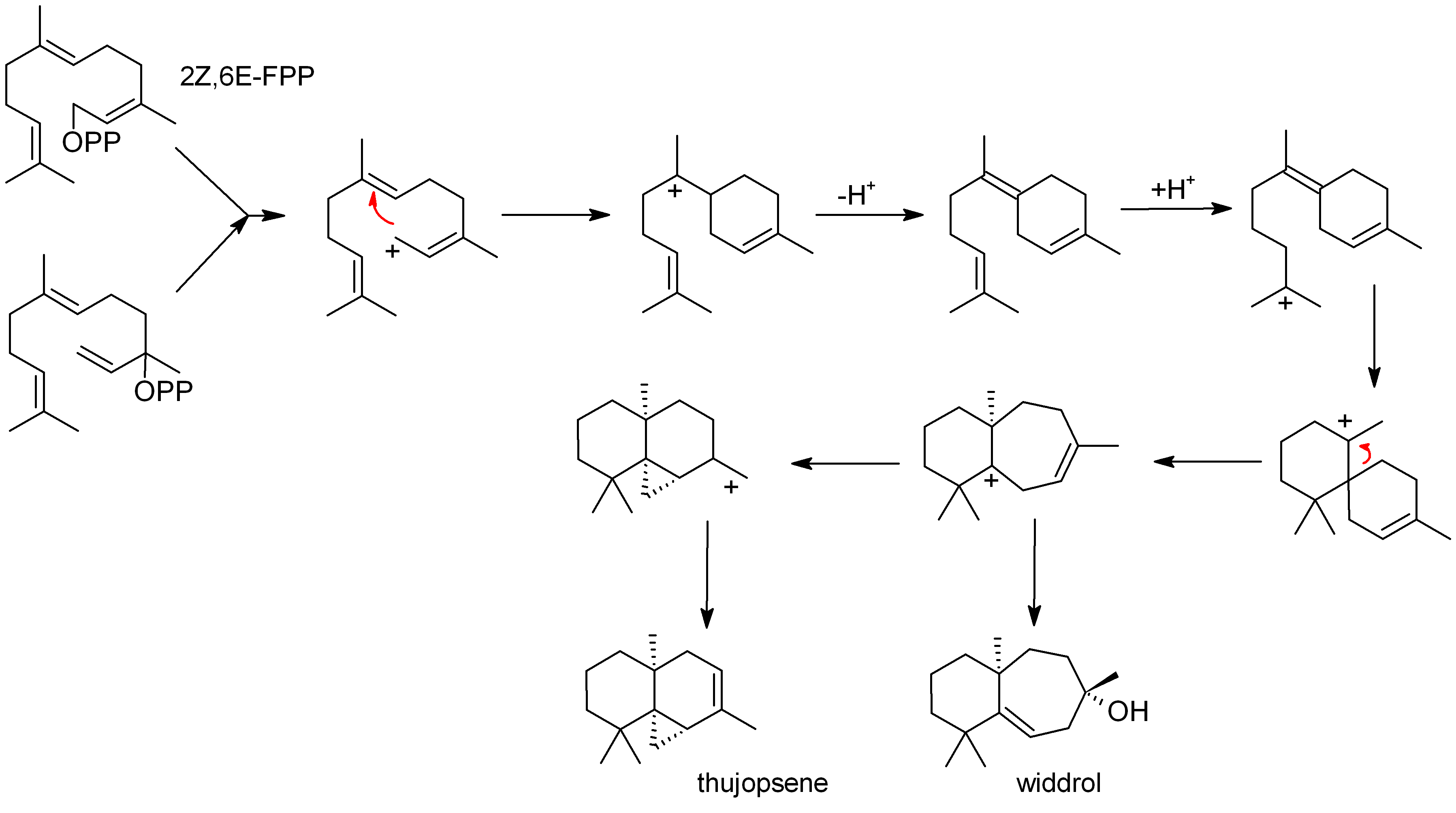|
Cedar Oil
Cedar oil, also known as cedarwood oil, is an essential oil derived from various types of Pinophyta, conifers, most in the Pinaceae, pine or Cupressaceae, cypress List of trees and shrubs by taxonomic family, botanical families. It is produced from the foliage, and sometimes the wood, roots, and stumps left after logging of trees for timber. It has many uses in art, Industry (manufacturing), industry, and perfumery, and while the characteristics of oils derived from various species may vary, all have some degree of Pesticide, pesticidal effects. Sources and characteristics Although termed cedar or cedarwood oils, the most important oils are produced from Distillation, distilling wood of a number of different junipers (''Juniperus'') and Cupressus, cypresses (''Cupressus''; both of the family Cupressaceae), rather than true Cedrus, cedars (of the family Pinaceae). Similar oils are distilled, pressed or chemically extracted in small quantities from wood, roots, and leaves from plan ... [...More Info...] [...Related Items...] OR: [Wikipedia] [Google] [Baidu] |
Cedrol
Cedrol is a sesquiterpene alcohol found in the essential oil of conifers (cedar oil), especially in the genera ''Cupressus'' (cypress) and ''Juniperus'' (juniper). It has also been identified in ''Origanum onites'', a plant related to oregano. Its main uses are in the chemistry of aroma compounds. It makes up about 19% of cedarwood oil Texas and 15.8% of cedarwood oil Virginia. Cedrol has not been proven to be toxic in humans. It has been shown to have antioxidant and antiinflammatory along with other beneficial effects. In skin sensitization tests 2/20 people showed negative effects, and on the second test there was no sensitivity found. This compound and ones similar have been found to have antiseptic, anti-inflammatory, antispasmodic, tonic, astringent, diuretic, sedative, insecticidal, and antifungal activities ''in vitro''. These compounds are used globally in traditional medicine and cosmetics. Results of a 2015 study suggest that cedrol strongly attracts pregnant female mosqu ... [...More Info...] [...Related Items...] OR: [Wikipedia] [Google] [Baidu] |
Juniperus Ashei
''Juniperus ashei'' (Ashe juniper, mountain cedar, blueberry juniper, post cedar, or just cedar) is a drought-tolerant evergreen tree, native from northeastern Mexico and the south-central United States to southern Missouri. The largest areas are in central Texas, where extensive stands occur. Ashe juniper grows up to tall, and over time can reach , and provides erosion control and year-round shade for wildlife and livestock. Description The feathery foliage grows in dense sprays, bright green in color. The leaves are scale-like, long, and produced on rounded (not flattened) shoots. It is a dioecious species, with separate male and female plants. The seed conifer cone, cones are round, long, and soft, pulpy and Berry (botany), berry-like, green at first, maturing purple about 8 months after pollination. They contain one or two seeds, which are dispersed when birds eat the cones and pass the seeds in their droppings. The male cones are 3–5 mm long, yellow, turning brown a ... [...More Info...] [...Related Items...] OR: [Wikipedia] [Google] [Baidu] |
Cedrol
Cedrol is a sesquiterpene alcohol found in the essential oil of conifers (cedar oil), especially in the genera ''Cupressus'' (cypress) and ''Juniperus'' (juniper). It has also been identified in ''Origanum onites'', a plant related to oregano. Its main uses are in the chemistry of aroma compounds. It makes up about 19% of cedarwood oil Texas and 15.8% of cedarwood oil Virginia. Cedrol has not been proven to be toxic in humans. It has been shown to have antioxidant and antiinflammatory along with other beneficial effects. In skin sensitization tests 2/20 people showed negative effects, and on the second test there was no sensitivity found. This compound and ones similar have been found to have antiseptic, anti-inflammatory, antispasmodic, tonic, astringent, diuretic, sedative, insecticidal, and antifungal activities ''in vitro''. These compounds are used globally in traditional medicine and cosmetics. Results of a 2015 study suggest that cedrol strongly attracts pregnant female mosqu ... [...More Info...] [...Related Items...] OR: [Wikipedia] [Google] [Baidu] |
Thujopsene
Thujopsene is a natural chemical compound, classified as a sesquiterpene, with the molecular formula C15H24. Thujopsene is found in the essential oil of a variety of conifers, in particular '' Juniperus cedrus'' and '' Thujopsis dolabrata'' in which it comprises around 2.2% of the weight of the heartwood. Biosynthesis Thujopsene is biosynthesized from farnesyl pyrophosphate Farnesyl pyrophosphate (FPP), also known as farnesyl diphosphate (FDP), is the precursor to all sesquiterpenes, which comprises thousands of compounds. These include all sesquiterpenes as well as sterols and carotenoids. It is also used in the syn ... (FPP): : References {{reflist Hydrocarbons Sesquiterpenes Cyclopropanes Tricyclic compounds ... [...More Info...] [...Related Items...] OR: [Wikipedia] [Google] [Baidu] |
Thuja Plicata
''Thuja plicata'' is a large evergreen coniferous tree in the family Cupressaceae, native to the Pacific Northwest of North America. Its common name is western redcedar in the U.S. or western red cedar in the UK, and it is also called pacific red cedar, giant arborvitae, western arborvitae, just cedar, giant cedar, or shinglewood. It is not a true cedar of the genus ''Cedrus''. ''T. plicata'' is the largest species in the genus ''Thuja'', growing up to tall and in diameter. It mostly grows in areas that experience a mild climate with plentiful rainfall, although it is sometimes present in drier areas on sites where water is available year-round, such as wet valley bottoms and mountain streamsides. The species is shade-tolerant and able to establish in forest understories and is thus considered a climax species. It is a very long-lived tree, with some specimens reaching ages of well over 1,000 years. Indigenous peoples of the Pacific Northwest use the wood of this species for ma ... [...More Info...] [...Related Items...] OR: [Wikipedia] [Google] [Baidu] |
Juniperus Virginiana
''Juniperus virginiana'', also known as eastern redcedar, red cedar, Virginian juniper, eastern juniper, red juniper, and other local names, is a species of juniper native to eastern North America from southeastern Canada to the Gulf of Mexico and east of the Great Plains. Farther west it is replaced by the related ''Juniperus scopulorum'' (Rocky Mountain juniper) and to the southwest by ''Juniperus ashei'' (Ashe juniper).Farjon, A. (2005). ''Monograph of Cupressaceae and Sciadopitys''. Royal Botanic Gardens, Kew. Adams, R. P. (2004). ''Junipers of the World''. Trafford. It is not to be confused with ''Thuja occidentalis'' (eastern white cedar). Description ''Juniperus virginiana'' is a dense slow-growing coniferous evergreen tree with a conical or subcylindrical shaped crown that may never become more than a bush on poor soil, but is ordinarily from tall, with a short trunk in diameter, rarely to in height and in diameter. The oldest tree reported, from West Virginia, w ... [...More Info...] [...Related Items...] OR: [Wikipedia] [Google] [Baidu] |
Cedrene
Cedrene is a sesquiterpene found in the essential oil of cedar. The two isomer In chemistry, isomers are molecules or polyatomic ions with identical molecular formula – that is, the same number of atoms of each element (chemistry), element – but distinct arrangements of atoms in space. ''Isomerism'' refers to the exi ...s present in the oil are (−)-α-cedrene and (+)-β-cedrene, which differ in the position of a double bond. Uses Used in various perfumes and fragrances to produce a woody scent. See also * Cedrol, another component of cedar oil Logic of Organic Synthesis (Rao) References Sesquiterpenes B {{hydrocarbon-stub ... [...More Info...] [...Related Items...] OR: [Wikipedia] [Google] [Baidu] |
US Environmental Protection Agency
The Environmental Protection Agency (EPA) is an independent agency of the United States government tasked with environmental protection matters. President Richard Nixon proposed the establishment of EPA on July 9, 1970; it began operation on December 2, 1970, after Nixon signed an executive order. The order establishing the EPA was ratified by committee hearings in the House and Senate. The agency is led by its administrator, who is appointed by the president and approved by the Senate. The current administrator is Lee Zeldin. The EPA is not a Cabinet department, but the administrator is normally given cabinet rank. The EPA has its headquarters in Washington, D.C. There are regional offices for each of the agency's ten regions, as well as 27 laboratories around the country. The agency conducts environmental assessment, research, and education. It has the responsibility of maintaining and enforcing national standards under a variety of environmental laws, in consultation w ... [...More Info...] [...Related Items...] OR: [Wikipedia] [Google] [Baidu] |
Preservative
A preservative is a substance or a chemical that is added to products such as food products, beverages, pharmaceutical drugs, paints, biological samples, cosmetics, wood, and many other products to prevent decomposition by microbial growth or by undesirable chemical changes. In general, preservation is implemented in two modes, chemical and physical. Chemical preservation entails adding chemical compounds to the product. Physical preservation entails processes such as refrigeration or drying.Erich Lück and Gert-Wolfhard von Rymon Lipinski "Foods, 3. Food Additives" in ''Ullmann's Encyclopedia of Industrial Chemistry'', 2002, Wiley-VCH, Weinheim. Preservative food additives reduce the risk of foodborne infections, decrease microbial spoilage, and preserve fresh attributes and nutritional quality. Some physical techniques for food preservation include dehydration, UV-C radiation, freeze-drying, and refrigeration. Chemical preservation and physical preservation techniques ... [...More Info...] [...Related Items...] OR: [Wikipedia] [Google] [Baidu] |




